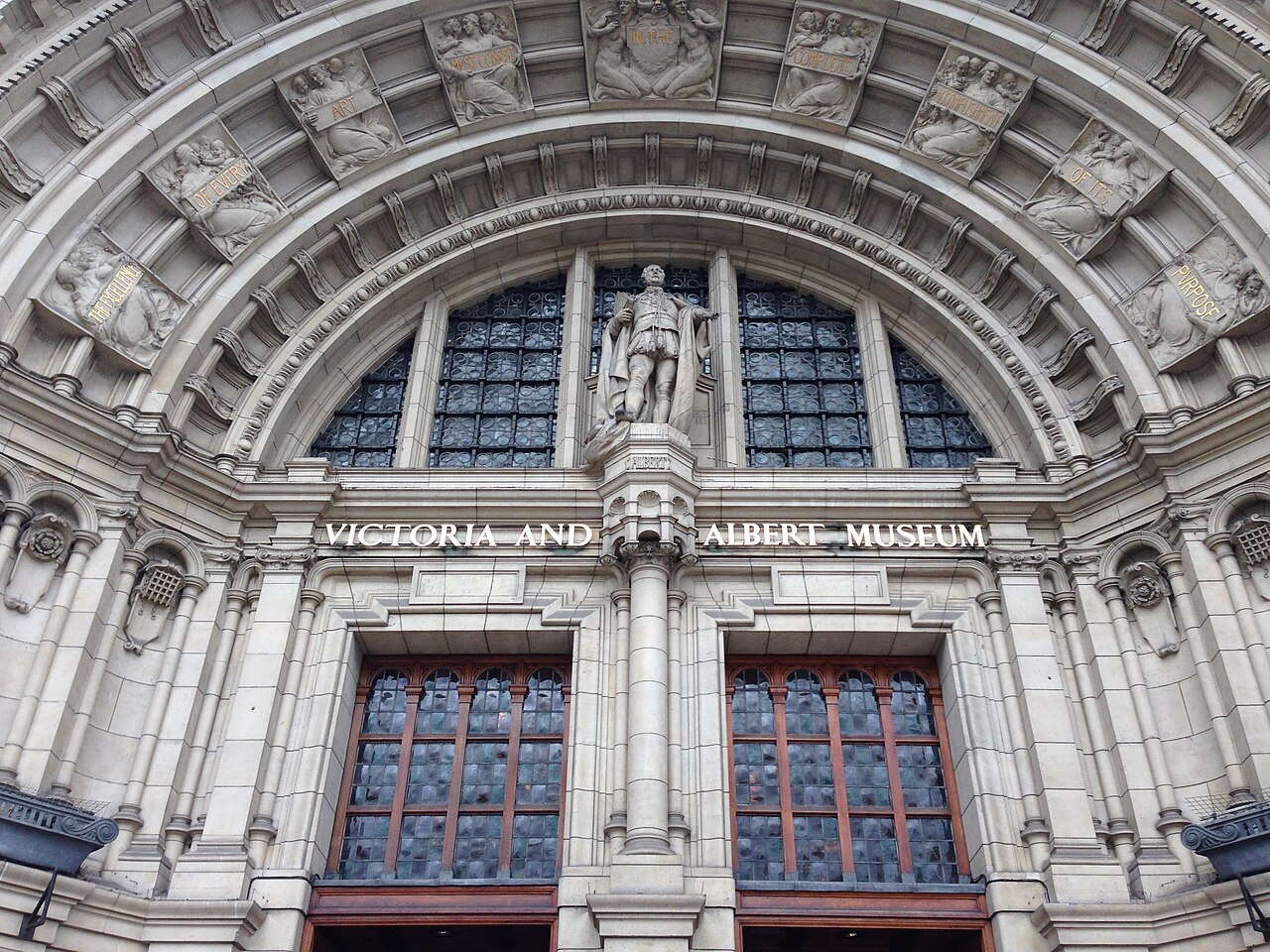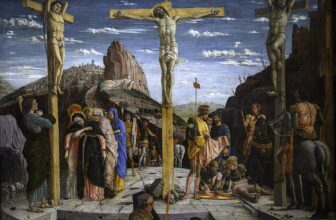
The World’s Largest Collection of Decorative Arts and Design
The Victoria and Albert Museum (V&A) stands as an iconic symbol of British cultural heritage, a treasure trove that houses the world’s most extensive collection of decorative arts and design. With over 2.3 million objects spanning over 5,000 years of human creativity, it is much more than just a museum, it is a living, breathing testament to the world’s artistic history. In this story, we’ll explore the V&A’s remarkable history, stunning architecture, and some of the exceptional events that have made this museum a beacon of culture and design in the heart of London.
A Glimpse into History
The V&A was founded in 1852 as the Museum of Manufactures, a vision borne from the cultural and industrial revolutions of the 19th century. Queen Victoria and Prince Albert, inspired by the Great Exhibition of 1851, wanted to create a space where the excellence of industrial design could be celebrated and where the public could learn about the intersection of art and craftsmanship. It was Prince Albert’s vision to create an institution where art and design could serve both practical and aesthetic purposes, elevating British industries.
The museum was initially located in Marlborough House before moving to its present site in South Kensington, where it was renamed the Victoria and Albert Museum in honor of Queen Victoria and Prince Albert. Over the years, the V&A has grown exponentially, both in terms of its collection and influence, and it has become an essential part of London’s cultural fabric.
Architectural Marvel
The architecture of the Victoria and Albert Museum is as remarkable as the collections it holds. The museum was designed by a series of prominent architects, including Henry Cole, who helped guide its vision from the very beginning. Its design reflects the spirit of the Victorian era—grand, intricate, and dedicated to showcasing the best of British design.
The building’s structure is a blend of Victorian and Renaissance Revival styles. Its red brick and terracotta exterior create a bold and imposing presence, while inside, the soaring galleries, intricate ironwork, and detailed plasterwork showcase the craftsmanship that the museum celebrates. The central courtyard, flanked by grand galleries and topped with a vast glass roof, allows natural light to flood the museum, enhancing the viewing experience.
Perhaps the most notable feature of the V&A’s architecture is its use of “period rooms.” These rooms are designed to represent specific historical eras, offering an immersive experience that transports visitors back in time. The rooms are meticulously recreated with period furniture, textiles, and decorative arts to reflect the finest examples of design from various periods, including Renaissance, Baroque, and Rococo.
The museum’s glass-and-steel entrance hall, the main entrance designed by Sir Aston Webb, is one of London’s most awe-inspiring spaces, providing a dramatic first impression to visitors and highlighting the museum’s architectural grandeur.
Collections Beyond Compare
The V&A’s collection is unrivaled in its diversity and scale, encompassing everything from medieval armor to contemporary fashion, from Chinese ceramics to British textiles. It is a museum that invites visitors to explore the decorative arts through the ages, and each of its galleries tells a unique story of human creativity and innovation.
Among the most celebrated collections in the V&A is its extensive British Galleries, which showcases over 1,000 objects from the 1500s to the present day. The gallery displays masterpieces of furniture, textiles, silver, and ceramics, offering insight into the development of British design and craftsmanship. The Medieval and Renaissance galleries are another highlight, featuring objects such as illuminated manuscripts, religious artifacts, and sculptures that chart the cultural and artistic achievements of these periods.
The museum’s fashion collection is world-renowned, with over 14,000 objects covering more than 500 years of fashion history. These garments, accessories, and textiles offer a glimpse into the evolution of fashion, from the extravagant gowns of the 18th century to the cutting-edge designs of the 21st century.
Equally impressive is the V&A’s extensive collection of Asian art, which spans over 4,000 years and includes sculptures, textiles, ceramics, and paintings from regions such as China, Japan, India, and the Islamic world. This collection provides an invaluable resource for understanding the diverse cultures and artistic traditions of Asia, and it highlights the rich history of cross-cultural exchange.
Groundbreaking Exhibitions and Events
The V&A is renowned not only for its permanent collections but also for its dynamic and forward-thinking exhibitions. Over the years, the museum has hosted exhibitions that have attracted international attention, showcasing the intersection of design, art, and culture in innovative ways.
One of the most notable events in the museum’s recent history was the “Alexander McQueen: Savage Beauty” exhibition, which celebrated the life and work of the iconic British fashion designer. The exhibition, which was first held at the Metropolitan Museum of Art in New York, was later showcased at the V&A to widespread acclaim. It was a testament to the museum’s ability to merge the worlds of contemporary fashion with traditional design and artistry.
Another groundbreaking exhibition was “David Bowie Is,” which celebrated the legendary British musician’s impact on fashion, design, and music. This exhibition was a captivating journey through Bowie’s ever-evolving artistic persona, showcasing everything from his costumes to his stage sets. It was the first major exhibition to explore Bowie’s creative influence on multiple art forms, attracting a new audience to the museum and solidifying the V&A’s reputation as a cultural innovator.
The V&A also hosts an impressive program of live events, workshops, talks, and screenings that bring design and the creative process to life. From educational workshops on fashion design to talks with world-renowned architects, these events offer opportunities for visitors to engage with the museum’s collections and interact with leading artists, designers, and historians.
The V&A Today: A Museum for the Future
The Victoria and Albert Museum remains at the forefront of the global conversation about design, art, and culture. It is a place where the past, present, and future intersect, where the stories of human creativity are told through a rich array of objects, exhibitions, and events. With its forward-thinking programming and commitment to showcasing diverse and contemporary voices, the V&A continues to inspire and educate millions of visitors each year.
One of the museum’s most exciting recent developments is its expansion into the digital realm. The V&A has launched numerous online initiatives, including virtual exhibitions and educational resources, making its collections accessible to people around the world. The museum’s online presence has opened new doors for global audiences to engage with art and design, furthering its mission of sharing knowledge and fostering creativity.
The V&A also remains deeply committed to sustainability and social responsibility. Its new initiatives aim to reduce the environmental impact of its exhibitions and operations, ensuring that the museum remains a relevant and responsible institution for generations to come.
The Victoria and Albert Museum stands as a beacon of human creativity, a place where art, design, and history are preserved and celebrated in all their diverse forms. From its rich history and stunning architecture to its world-class collections and groundbreaking exhibitions, the V&A continues to captivate audiences from around the world. It is a museum that not only reflects the cultural achievements of the past but also looks forward to shaping the future of art and design. As the world’s largest museum of decorative arts and design, the V&A is not just a museum, it is a journey through the very essence of human ingenuity, creativity, and expression.




